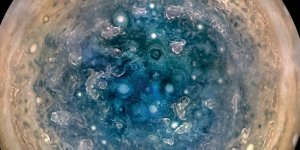| News / Space News |
Astronomers Identify Purest, Most Massive Brown Dwarf
An international team of astronomers has identified a record breaking brown dwarf (a star too small for nuclear fusion) with the 'purest' composition and the highest mass yet known.

SDSS J0104+1535, is a member of the halo of our Galaxy. ![]()
The object, known as SDSS J0104+1535, is a member of the so-called halo -- the outermost reaches -- of our Galaxy, made up of the most ancient stars.
Brown dwarfs are intermediate between planets and fully-fledged stars. Their mass is too small for full nuclear fusion of hydrogen to helium (with a consequent release of energy) to take place, but they are usually significantly more massive than planets.
Located 750 light years away in the constellation of Pisces, SDSS J0104+1535 is made of gas that is around 250 times purer than the Sun, so consists of more than 99.99% hydrogen and helium. Estimated to have formed about 10 billion years ago, measurements also suggest it has a mass equivalent to 90 times that of Jupiter, making it the most massive brown dwarf found to date.
It was previously not known if brown dwarfs could form from such primordial gas, and the discovery points the way to a larger undiscovered population of extremely pure brown dwarfs from our Galaxy's ancient past.
SDSS J0104+1535 has been classified as an L type ultra-subdwarf using its optical and near-infrared spectrum. (Tasnim News Agency)
YOU MAY ALSO LIKE



